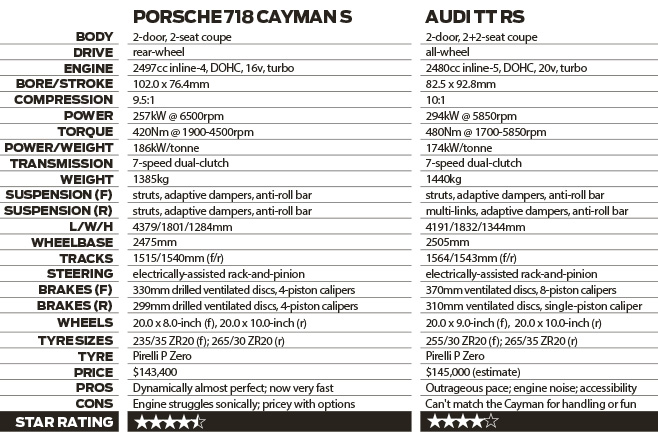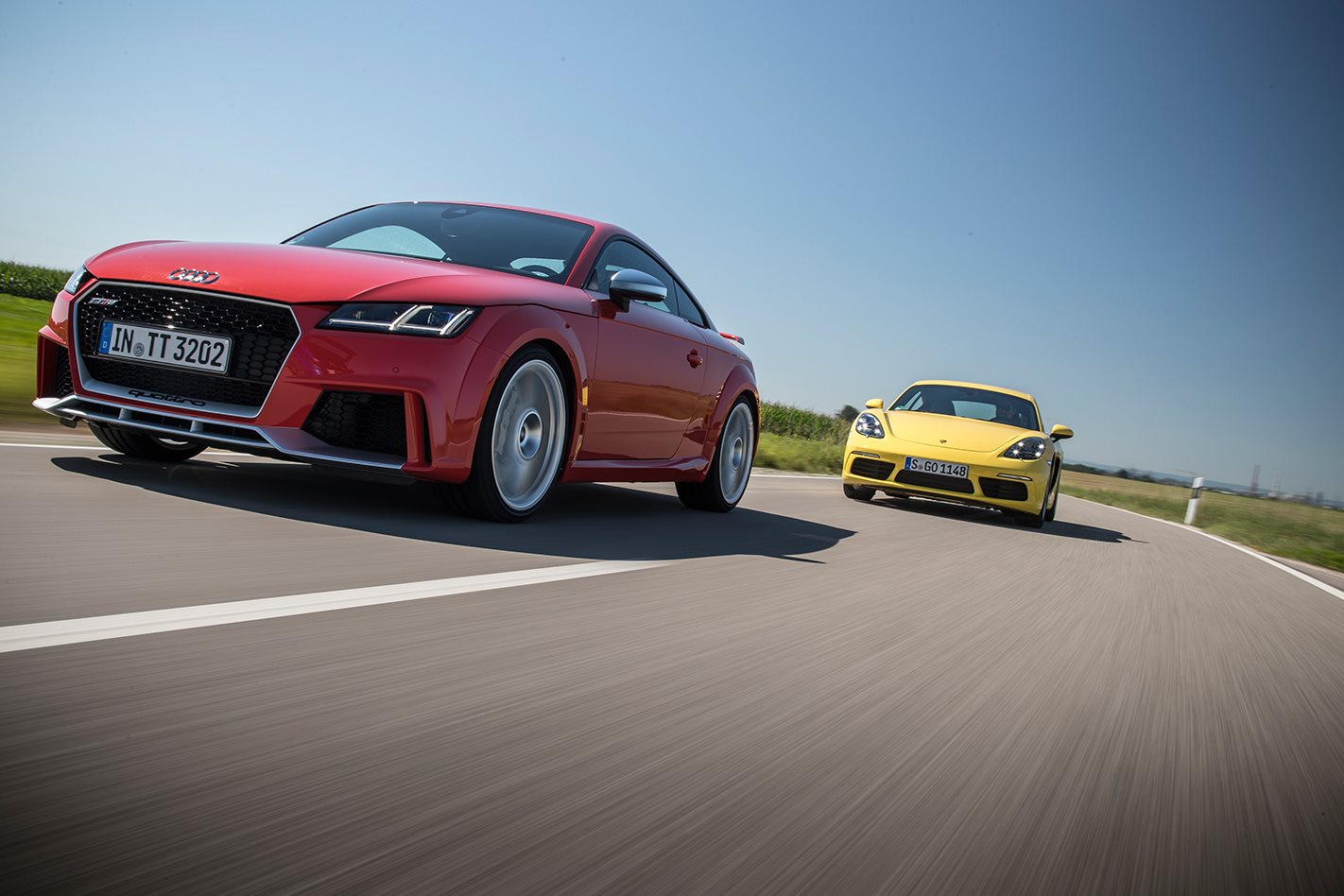Hate is the flavour of the day. From Brexit to the US election there’s precious little love around. For petrolheads, turbos are taking the heat, and there’s good reason for it.
Saabs blew turbos faster than front tyres, while BMW’s 2002 offering had lag so bad some are still spooling up. We’ve had a lot of time to learn to hate them.
Despite these early failings, 40 years later everything has a turbocharger and hardcore car fans are left mourning the demise of natural, pure engine power. I’m part of this group and must confess I wanted to hate Porsche’s new forced-induction four-cylinder boxer engine, which has replaced the free-breathing six in Boxster and Cayman.
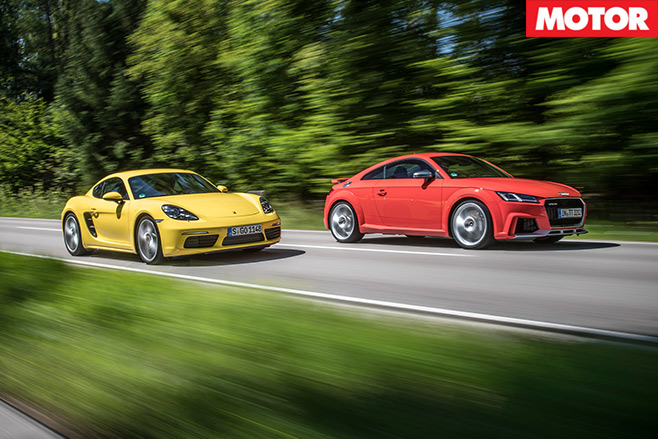
Twist the lozenge-shaped Porsche key to start the engine the old-fashioned way and what disappoints is the noise generated behind your back. Expecting a sound worthy of its heritage, I’m instead met with something metallic, oddly reminiscent of a tuned Beetle from way back when with plenty of initial clatter and splutter, followed by a hoarse, uneven and atonal idle.
The tune picks up as you add revs – there are 7500 to play with – and the optional extra-loud exhaust system bulks the noise, but ultimately your ears are mainly placated with buzz and rasp.
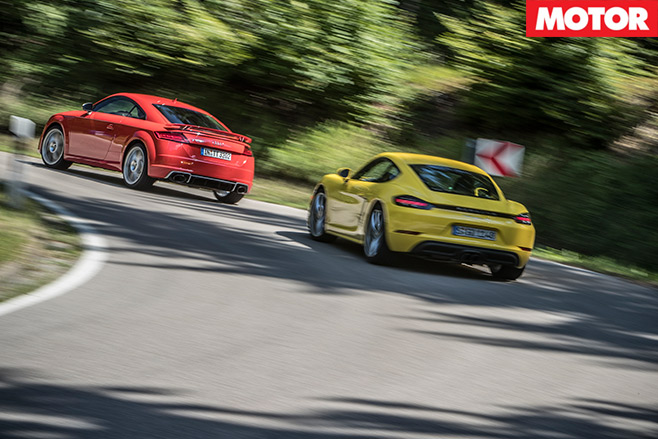
Like the 718 here, the TT RS has the optional hoon exhaust, but when worked the 2.5-litre alloy-block five-cylinder is unexpectedly melodic, so even before we take off the Porsche has some catching up to do on its rival.
While the Porsche comes with a six-slot manual, we specced up to the seven-speed PDK dual-clutch transmission to match the only choice in the TT RS. But now you have to forget everything you thought you knew about Caymans.
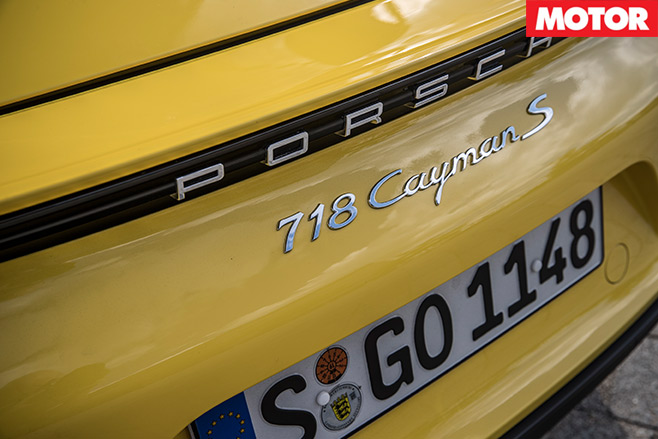
Even at part-throttle it whips up boost pressure by finding a delicate balance between wastegate aperture, ignition timing and throttle blade position. As a result of this German mechanical ballet, the 16-valver drops the hammer hard as quickly as you can plant your boot on the floor.
Audi, under former R&D chief Ulrich Hackenberg, developed a low-friction, high-efficiency all-aluminium five-cylinder engine that weighs 26kg less than its cast-iron predecessor. Tuned for 298kW in the TT RS with plenty of headroom, it made the planned 305kW 2.0-litre four redundant.

Seventh is a highway cruising gear; in Dynamic mode she’ll zoom along in the bottom six ratios. You can slide the shifter across to the manual gate but the steering wheel paddles are much more intuitive.
The Porsche catches up here; we have nothing but praise for the PDK fitted to the 718. Sport or Sport Plus modes change the shift pattern more dramatically than the TT RS. It’s all to do with how long to hold the gears, how to time shifts and how to best manage the power and torque flow.
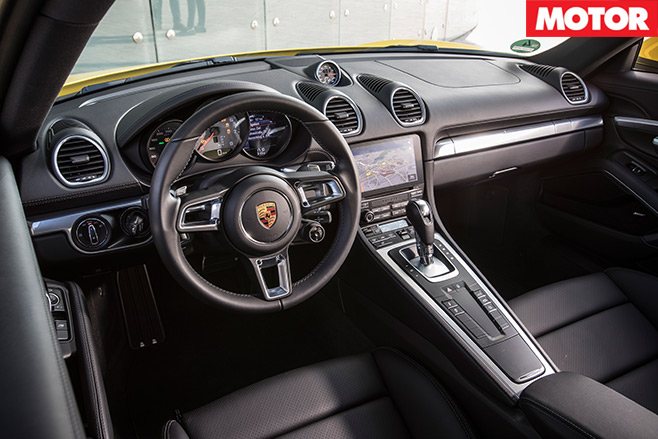
As a means of transport, the TT RS is a nicer place to be. Where the Porsche has a firewall, the Audi has (admittedly token) seats that can be folded to increase luggage space from 305 to 712 litres. Sporting more head and legroom, easier-to-use controls and a more stylish cockpit with more modern materials, the TT RS also comes with quattro, S-tronic and 19-inch wheels, though our test car sports the optional 20s.
Porsche makes you pay extra for the dual-clutch transmission and decent-size footwear. We don’t have a local list price on the TT RS yet but we’re expecting around $145K, very similar to the Cayman S.

If speed is your drug, this colourful couple will deliver – you’re almost always going too fast on empty roads; even on an unrestricted stretch of autobahn, the fast lane was rarely clear enough to max them out. The Audi is normally held to 250km/h but we had an extra-cost optional 280km/h limit, and even at that speed there was some urge left.
Officially, the Cayman S will do 286km/h; we saw an indicated 300km/h moments before a holidaymaker pulled out without indicating and introduced us to another difference between the two cars.

But picking at the differences isn’t the answer. It’s simpler than that; the Porsche is a sports car, the Audi is a sporty car. In the 718, you sit close to the road, the roof is only 1284mm above the tarmac (1264mm with PASM in Sport plus). With the roof a full 60mm loftier, the TT RS is easier to get in and out of, and more relaxed behind the wheel. The Audi – despite the red stitching, fancy instruments and the fixed wing – is clearly more A3 than R8.
What splits the pair dynamically is the steering. The Cayman S uses the same rack as the 911 Turbo, one of the most satisfying man-machine interfaces around. The TT RS benefits from a variation of the MQB steering, with three different settings labelled Comfort, Auto and Dynamic. It’s the best R&D could do but it scores only 7.5/10 from me for total immersion, where the Cayman scores a solid 10.
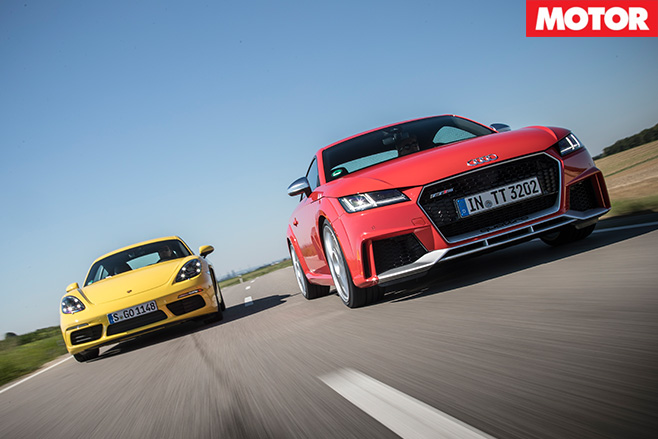
With torque vectoring, for example, it will miraculously pull the car straight at the exit of a bend or under hard braking into a downhill corner. No big deal perhaps, but a committed driver is reluctant to accept any intervention, unless we’re talking true life-savers like ABS or ESP. Once again this is Audi struggling to fuse maximum active safety with total involvement.
The Porsche provides more freedom. It still inspires confidence despite the longer leash, and has been engineered for absolute interaction. The steering follows the tarmac with rare accuracy, even though this set-up implies a certain degree of vibration will find its way back to your hands.

The main active-safety system in the Audi is quattro, and in foul weather, on slippery roads, a hard-charging TT RS would remain relatively unperturbed while the Cayman S driver would be furrowing their brow in concentration. Does active safety make your heart beat faster? Probably not. Does it make the drive home less challenging? Absolutely.
Click the thumbwheel from Comfort to Sport, and the Porsche flexes its muscles. Nudge it a notch further to Sport Plus, and the car prepares itself for a day at the track. Your best bet is probably Individual – here you can, for example, blend compliant dampers with a faster shift and more eager throttle response.

If you want to sample the handling spectrum from mild understeer to wild oversteer, the Cayman will happily play along. It’s a classic case of challenge followed by instant reward – or punishment.
Still, the Audi is the quicker A-to-B car on certain days. Its trick driveline now boasts wheel-selective torque delivery. Combine that with the phenomenal cornering grip of the 20in Pirelli P Zeros and in Dynamic mode the Audi shunts grunt to the rear wheels in the blink of an eye. Through fast sweepers, the TT RS is surreally fast, poised and grounded. Where ripples and grooves start to annoy the Porsche, the Audi continues – focused and unswerving.

With quattro, launch control and an extra 60Nm, it makes the Porsche’s 4.2sec 0-100km/h seem tame, surging ahead at just 3.7sec – that’s AMG GT-S and M6 territory. However, the handling balance costs the Audi dearly. Turn-in isn’t quite as eager, and it’ll eventually understeer if you’re exploring ten-tenths cornering.
On our zig-zag roller-coaster test route, the TT RS started with a tyre pressure of 33psi all around. About 40 minutes later, rubber melting and brakes smoking, the readouts were 48psi front and 37psi rear.
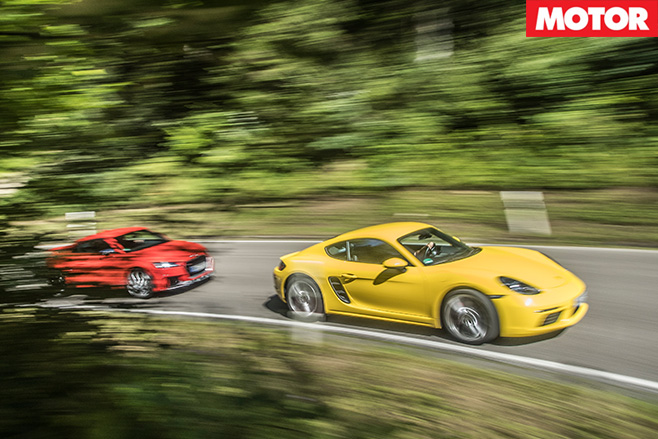
On paper, these two have a lot in common. On the road, however, they display quite different qualities. The TT RS wears a flash and aggressive outfit, and it delivers when pushed, its dynamic potential remarkably accessible. The 718 Cayman S is a more complete car than last year’s GTS, and it ticks all the critical boxes, moving another step closer to the iconic 911.
Despite the paradigm shift to the turbocharged flat four and my secret desire to hate it on that basis, this is the more emotional choice, the more engaging drive, the sole proper sports car.
